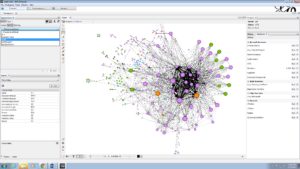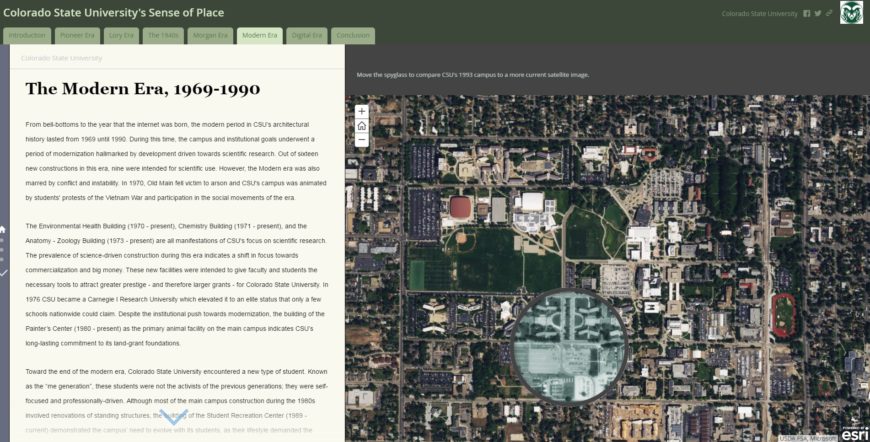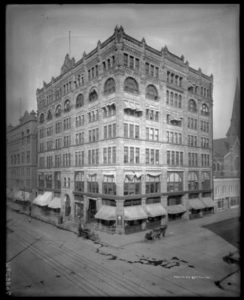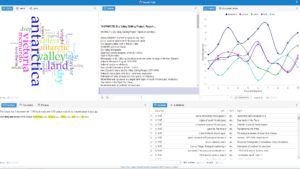Digital Liberal Arts

You may think that liberal arts faculty and students only have their noses in books (or trowels in the ground, if you’re in anthropology), but the ways in which we learn and study and know things is no longer just confined to the physical.
In fact, there’s an entire way of looking at the world – and our human ways of living in it – that has gone digital.
Enter digital liberal arts (sometimes called digital humanities): an approach capable of asking and answering new questions about the human experience using digital tools and methods.
Revolutionizing research
“The digital liberal arts has two overlapping dimensions,” says Bruce Ronda, English professor, associate dean and one of the founders of CSU’s new Digital Liberal Arts Hub. “First are the databases that house the papers and works produced by writers, artists, politicians, philosophers and others – the fact that we can access these things online has revolutionized our scholarship.”
“But second,” he adds, “and perhaps even more revolutionary, is the visualization of those archives that gives us a new direction to pursue and allows us to ask different questions of the materials.”
Questions such as:
• How do firefighters communicate about workplace risk to create a safer work environment? – Tim Amidon, English
• How can we visualize social relationships in 18th century Spanish literature? – Jonathon Carlyon, Languages, Literatures and Cultures
• What do 17th and 18th century sermons say about public life, politics and prevailing religious beliefs and social attitudes of the time? – Zach Hutchins, English
• What are the internal structures of works of British Literature and how can we visualize them? – Jaime Jordan, English
• How did people navigate the urban spaces of Denver in the early 20th century? – Robert Jordan, History
• How does the introduction of citizen-generated ballot information influence voters’ knowledge and attitudes toward government? – Katie Knobloch, Communication Studies
• How do we understand and map the people, time period and topics of what is called “useful cinema” (the use of film by institutions to achieve goals related to training or education rather than commercial entertainment) so that we can closely read and analyze its uses? – Kit Hughes, Communication Studies

While a variety of professors in the liberal arts have for years been using digital ways to explore their questions about humanity and conduct their research, now there is an emphasis on and a concerted effort to teach others why and how to use this method of research and exploration as a way to understand a person’s interest area even more deeply.
“Imagine the ways it will impact your scholarship, your learning and your teaching,” says Ronda.
And with the support and enthusiasm of Ronda and Robert Jordan, a history instructor, the Digital Liberal Arts Hub is now open for business at CSU.
The lab

In a four-computer lab in Eddy 12, students, faculty and staff now have a new resource for assistance with the project planning, development and publication of projects that incorporate digital methods.
The Digital Liberal Arts Hub provides training on the latest digital tools for use inside and outside the classroom, and offers support from interns capable of providing assistance with project planning, data entry, cleanup, visualization and publication.
The lab is a teaching, learning and research space to do class projects, or for personal research. “Even with data sets containing millions of pieces of information, we can use specialized software to tease out the patterns and anomalies hiding in plain sight,” says Jordan. “A digital approach isn’t meant to replace, but rather to augment, our existing teaching and research practices by allowing us to be more efficient and more comprehensive in our approach to knowledge production.”
Many of the tools that the Hub provides include training and assistance to clean up and visualize data so that it can be compiled and viewed in a way that can offer insight into how we have lived in and interacted with our world.
Digital tools

Digital tools allow you to:
- Analyze and visualize networks
- Examine the inner structures of texts
- Manipulate and make meaning from big data
- Curate your digital content and organize your research
“This isn’t just a shiny new thing to put on traditional scholarship, it’s meaningful,” Digital Liberal Arts intern and history graduate student Hailey Groo says. “Having a proficiency with these tools gives you an edge.”
“Ultimately, learning these tools and applying them to your studies – either as a student or a faculty member – can set you apart from others,” says Jordan. “We hope to be a springboard for lots of innovative content over the next several years.”
Visit the Hub
Join us for the opening of the Digital Liberal Arts Hub on Tuesday, March 7, 3:30 – 5 p.m.
Eddy 5 – Start here for refreshments and hear from Bruce Ronda and Robert Jordan about the Digital Liberal Arts Hub.
Eddy 12 – Tours of the computer lab will be given by interns of the Digital Liberal Arts Hub, featuring examples of past and present digital projects at CSU.
The Digital Liberal Arts Hub will be open M-F, 11 a.m. – 4 p.m. for students, staff and faculty to use. Interns will be available to assist with research questions and tools. Can’t make the open house? Check out the DLA Hub website, INTERFACE.